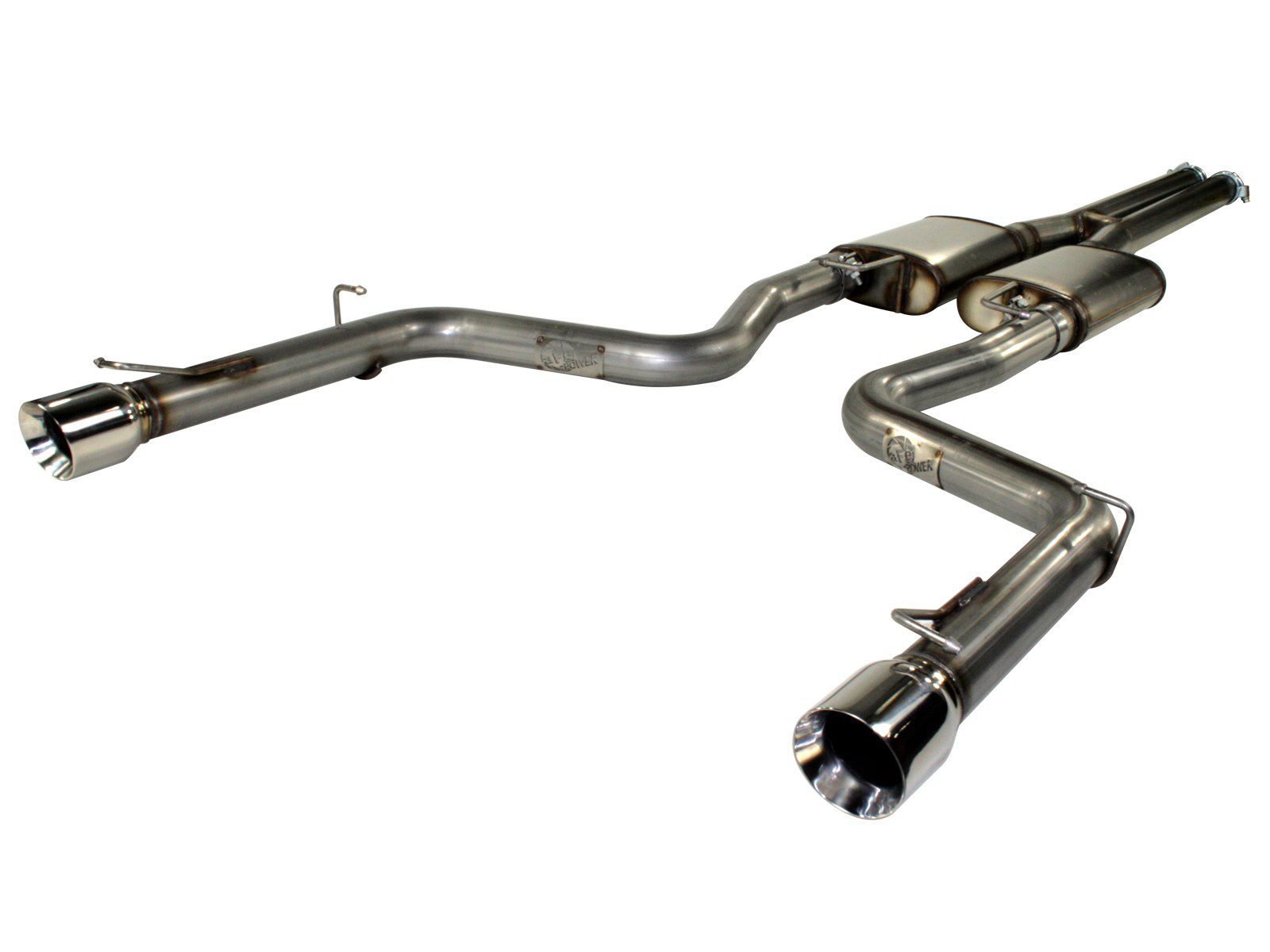How Much Horsepower Does Straight Pipe Add: Unleashing the True Power
A straight pipe can add horsepower to a vehicle, although the increase will vary depending on the specific car and its modifications. Introducing a straight pipe to the vehicle’s exhaust system can provide a direct path for the exhaust gases to exit the engine, reducing back-pressure, and potentially increasing horsepower.
However, the actual horsepower gains will depend on factors such as the engine’s design, efficiency, and tuning, as well as the other modifications made to the vehicle. It’s important to note that straight piping may also impact the vehicle’s emissions output and may not comply with legal requirements in some areas.
Therefore, it is crucial to consider all factors and consult with experts before making modifications to your vehicle’s exhaust system.
Impact Of Straight Pipe Exhaust On Horsepower
Impact of Straight Pipe Exhaust on Horsepower When it comes to assessing the impact of straight pipe exhaust on horsepower, several factors must be considered. Firstly, the make and model of the vehicle can significantly influence the horsepower gains or losses from installing a straight pipe exhaust. Additionally, the engine size and configuration play a crucial role in determining the overall performance. It’s important to recognize that straight pipes remove the restriction provided by traditional mufflers and catalytic converters, allowing for better exhaust flow. However, this can also lead to a loss of back pressure, potentially reducing low-end torque. In some cases, engine tuning may be required to maximize the potential gains. Moreover, considerations such as exhaust temperature and gas velocity should not be overlooked. In conclusion, while straight pipe exhausts can certainly enhance horsepower, the specific impact will vary based on various factors unique to each vehicle.Performance Enhancements With Straight Pipe Exhausts
Performance enhancements with straight pipe exhausts are a popular choice among car enthusiasts. One of the key benefits is the increased airflow and exhaust efficiency. By eliminating restrictions such as mufflers and resonators, a straight pipe allows the exhaust gases to flow more freely, resulting in improved engine performance. With better airflow, the engine can breathe easier, leading to an increase in horsepower and torque. The removal of these components also reduces the overall weight of the exhaust system, contributing to a better power-to-weight ratio. It’s important to note that the impact on engine performance will vary depending on the specific vehicle and modifications made. To optimize horsepower gains with a straight pipe exhaust, it is recommended to pair it with other performance-enhancing modifications, such as a high-flow air intake or an engine tune, to take full advantage of the increased exhaust flow.
Legal Considerations And Potential Drawbacks
Complying with emissions regulations is a crucial aspect to consider when contemplating adding a straight pipe to your vehicle. While it may enhance performance, it can also lead to legal complications. Emissions regulations are in place for a reason – they aim to reduce harmful pollutants released into the atmosphere. When you remove the catalytic converter, which is a standard component of factory exhaust systems, you risk violating these regulations.
Another significant factor to bear in mind is noise pollution. Straight pipes can significantly increase the noise level emitted by your vehicle, exceeding the limits set by local noise ordinances. This can result in penalties and fines, and potentially even impoundment of your vehicle if the noise is deemed excessively disruptive.
Therefore, it is important to strike a balance between performance gains and adhering to legal requirements. Consider alternative modifications that can optimize your vehicle’s power without compromising compliance. Consult local laws and regulations to ensure you remain within the boundaries of both emissions and noise restrictions, allowing you to enjoy the benefits of your vehicle’s performance enhancements without legal repercussions.

Credit: www.roushperformance.com
Installation And Modification Tips For Straight Pipe Exhausts
A straight pipe exhaust is a popular modification for car enthusiasts looking to increase performance and enhance the overall sound of their vehicle. However, before diving into the installation process, it’s important to consider a few factors.
Selecting the right exhaust system is crucial to ensure optimal results. This requires researching and understanding the different options available, such as material, design, and size. Each of these factors can have a significant impact on the overall performance and sound produced by the exhaust.
While some car enthusiasts may opt for a professional installation, others may choose to tackle the installation as a DIY project. Both options have their pros and cons. Professional installation ensures expertise and a warranty, but it can be more expensive. DIY installation allows for customization and cost savings, but requires more technical knowledge and skill.
Once the straight pipe exhaust is installed, adjustments may be necessary to achieve optimal performance. This could include fine-tuning the length and diameter of the pipes, as well as adjusting other components such as the headers or catalytic converters.
By carefully considering and implementing these installation and modification tips, car enthusiasts can enhance their vehicle’s performance and enjoy the aggressive rumble of a straight pipe exhaust.
Real-life Examples Of Straight Pipe Exhaust Power Boosts
Real-life examples of straight pipe exhaust power boosts provide compelling evidence for the notable horsepower gains and performance improvements achieved with this modification. Numerous car enthusiasts report substantial increases in power and torque after installing straight pipe exhaust systems on their vehicles.
Success stories from various car models and engines demonstrate the effectiveness of straight pipe exhausts. For example, a Mazda MX-5 with a straight pipe exhaust experienced a noticeable boost in horsepower, enhancing both acceleration and top speed. Similarly, a Volkswagen Golf GTI fitted with a straight pipe exhaust system gained significant power, resulting in improved performance on the road.
Although straight pipe exhausts can benefit a wide range of car models and engines, certain vehicles are particularly receptive to this modification. High-performance sports cars, such as the Ford Mustang and Chevrolet Camaro, often see substantial power gains with straight pipe exhausts.
| Car Model | Engine |
|---|---|
| Ford Mustang | 5.0L V8 |
| Chevrolet Camaro | 6.2L V8 |
In conclusion, the real-life examples and success stories presented here highlight the potential power enhancements achieved with straight pipe exhausts. Whether you own a Mazda MX-5, Volkswagen Golf GTI, Ford Mustang, or Chevrolet Camaro, exploring the benefits of a straight pipe exhaust could result in a significant boost in horsepower and overall performance.
Factors To Consider Before Upgrading To Straight Pipe Exhausts
Upgrading to a straight pipe exhaust system can significantly impact the horsepower of your vehicle. However, before making the switch, there are several factors to consider. Firstly, you need to assess the compatibility of your vehicle’s engine with a straight pipe exhaust. Certain engine types may not work well with this modification, leading to suboptimal results. Secondly, it’s crucial to weigh the trade-offs between power gains and potential drawbacks. While straight pipes may enhance horsepower, they can also result in increased noise levels and emissions, which may not be desirable in certain situations. Additionally, the long-term effects on your engine and exhaust system should be taken into account. Straight pipes can lead to increased stress on the engine and may affect the lifespan of the exhaust system. Therefore, it’s essential to weigh the pros and cons before deciding to upgrade to a straight pipe exhaust.
Frequently Asked Questions For How Much Horsepower Does Straight Pipe Add
Does Straight Piping Add Horsepower?
Straight piping can potentially increase horsepower by improving exhaust flow, reducing back pressure, and enhancing engine efficiency. However, the actual horsepower gain depends on various factors such as the specific vehicle and its engine characteristics. It’s important to note that straight piping may not be legal, and it can also result in increased noise levels.
Does Muffler Delete Add Hp?
Yes, a muffler delete can increase horsepower. By removing the muffler, exhaust flow is improved, reducing back pressure and allowing the engine to breathe better. This can result in a slight increase in horsepower and a sportier sound. However, it may not be legal in some areas and could affect emissions.
Do You Need A Tune For Straight Pipe?
Yes, a tune is generally recommended for a straight pipe exhaust system. A tune can optimize the air/fuel ratio and engine performance, preventing potential issues and helping your vehicle run efficiently.
What Will A Straight Pipe Do?
A straight pipe is an exhaust system that doesn’t have any mufflers or catalytic converters. It can increase engine performance and create a louder exhaust sound. However, it may also lead to increased noise pollution and could potentially violate emissions regulations.
Conclusion
After examining the effects of a straight pipe on horsepower, it’s clear that the results vary depending on several factors. While a straight pipe may provide a noticeable increase in horsepower for some vehicles, it’s important to consider the potential trade-offs, such as increased noise and the possibility of failing emissions tests.
Ultimately, the decision to install a straight pipe should be based on individual preferences and specific vehicle characteristics. To make an informed choice, consult with experts and consider all the pros and cons.






